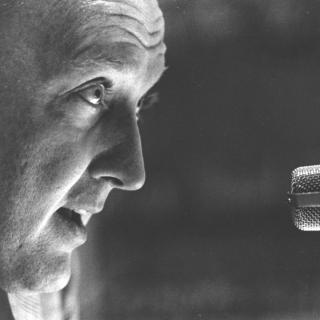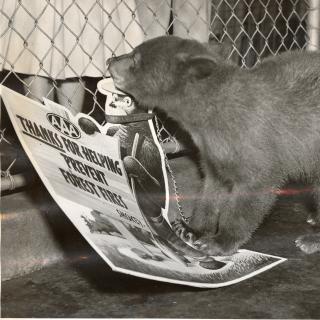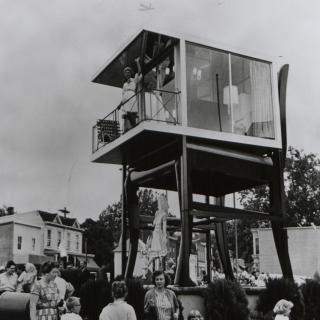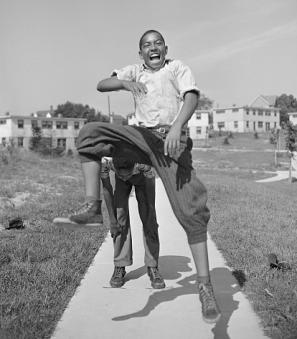Who Stands Atop the Dome of the U.S. Capitol Building?
In a city full of statues, the one that sits atop the Capitol dome holds a distinction that’s tough to argue against. Rising 288 feet above the Hill, it has one of the best views in Washington, D.C.1 It’s part of an image that has become synonymous with our city skyline: a white dome that, thanks to building height restrictions, stands out amongst the glass and concrete office blocks.
Unfortunately, the statue’s prime real estate may actually be its greatest downfall. Even though most Washingtonians know that it’s there, many don’t actually know what it’s a statue of. Can you blame us? It’s hard to get a good look at it.
The bronze statue, which adds nearly twenty feet of height to the Capitol dome, depicts a figure wearing a draped robe and feathered headdress.2 In its right hand, it leans on a sheathed sword. In the other, it carries a wreath of laurel leaves—symbols of peace and victory. Some of the most impressive details—the embellishments on the clothing, the textured feathers, and facial features—can’t be seen from the ground. Safe to say, this ambiguity has caused some confusion.
Perhaps the most obvious defining feature of the statue is its headdress. Even from the ground, it’s hard to miss the eagle head and feathers that crown the figure’s head—a detail which has led to some of the more prevalent popular theories as to the figure’s identity. Asking around Washington, locals and tourists alike might tell you that the feathers belong to an American Indian—either a generalized, cliched representation of many tribes or a specific historical hero. (The names of Pocahontas, Sacagawea, and Tecumseh are the most heard suggestions.) While untrue, it’s not a wholly unfounded supposition. Throughout the nineteenth century, the artists and designers of the Capitol used romanticized images of American Indians to decorate the building, often generalizing cultures that they believed to be uniquely American. Many such depictions have since been removed, but visitors to the building will still see representations of Pocahontas, Sacagawea, and Tecumseh within scenes of conquest and colonization.3 In fact, the statue’s feathered headdress was partially inspired by the artist’s impression of native clothing.4
Because of the statue’s draped, toga-like robes, some have also guessed that an ancient god or goddess watches over Washington. After all, the Capitol’s Neo-Classical design makes it the perfect pedestal for a Roman deity like Minerva, the goddess of wisdom and war. This theory is much closer to the truth, but still not wholly accurate. America’s founding politicians were obsessed with Greek and Roman culture—it’s the reason why the government buildings and monuments of D.C. look straight out of Athens and Rome. Even American heroes like George Washington received the classical treatment from early artists working at the Capitol.
All this being said: who is the mysterious figure sitting atop the Capitol dome? The truth is an interesting amalgamation of the popular theories.
In the 1850s, the Capitol building was a giant construction zone. Congress was bursting at the seams, quickly outgrowing their chambers as new states and territories sent representatives to Washington. And though the building recovered from its 1814 destruction at the hands of an invading British army, it still wasn’t the showstopper that the Founders originally envisioned.
In 1855, Congress approved plans for a cast-iron dome to top off the new and improved Capitol building. Architect Thomas Walter’s design included a statue for the top of the dome, originally intended to be a kind of classical figure. Captain Montgomery Meigs, the man overseeing the art and decoration of the Capitol’s interiors, was put in charge of the statue’s final design.
Though he liked the idea of an allegorical figure, Meigs wanted the statue to be more American than a god of the ancient world—but not just a repeat of the American symbols already spread throughout the building. “We have too many Washingtons,” Meigs complained in May 1855, as he tried to determine a precise subject matter for this important work of art. Eventually, he landed on the idea of a figure embodying the country’s founding ideals, “a Liberty,” which he thought “the best we can get.”5
Meigs sent his ideas to the sculptor Thomas Crawford, an American working out of a studio in Rome, who was already busy making other statues for the Capitol building. Crawford ran with the idea of a female figure he called “Freedom triumphant—in Peace and War.”6 Inspired by the ancient statues around him, Crawford’s design used classical symbols in a way that made sense to the American story. He sculpted a woman in Roman robes holding symbols of power: a shield, sword, and victory wreath. On her head, the figure wore a “liberty cap,” a red hat associated with emancipated slaves in ancient Rome but adapted as a symbol of freedom by American and French revolutionaries.7
Most people were happy with Crawford’s statue, but the Washington politician overseeing the Capitol’s construction objected to one key piece of the design. Jefferson Davis, Secretary of War and future president of the Confederate States of America, refused to approve the statue as long as she wore a freedom cap, arguing that “its history renders it inappropriate to a people who were born free and should not be enslaved.”8 During the American Revolution, white patriots referred to their “enslavement” in a loose, figurative sense, but in the 1850s, politicians like Davis were desperately trying to preserve the enslavement of Black Americans. Symbols on the national Capitol building held great weight—Davis needed to make sure that only certain people would be inspired by a statue of “Freedom.”
In the end, Crawford amended his design and gave the statue a version of a Roman battle helmet. Instead of the usual red feathers, though, he added the head and feathers of a bald eagle—combining a western symbol of war with something “suggested by the costume of our Indian tribes.”9 Jefferson Davis finally gave his seal of approval in April 1856, so Crawford began to sculpt. The outbreak of the Civil War stalled construction in the early 1860s, but President Abraham Lincoln believed that the sight of a completed Capitol dome—especially the Statue of Freedom—would boost morale.
Ironically, considering the thought that went into its creation, the Statue of Freedom owes its completion to an enslaved man working in Washington during the war. Philip Reid, enslaved by a local sculptor, was part of the team tasked with casting the statue in 1860. In order to copy the design in bronze, the sculptors needed to take apart Crawford’s plaster mold—only Reid was brave and clever enough to engineer a way to separate the mold without breaking it, allowing construction to continue. By 1863, when the pieces of the completed statue were being raised onto the top of the dome, Reid was a free man.10
Those wanting a close-up view of the Statue of Freedom don’t have to stand on Capitol Hill and crane their necks. The U.S. Capitol Visitor Center houses the original plaster cast designed by Crawford and used by Reid to cast the bronze. There, you can get a better idea of the many symbols that make up this complicated figure.
Footnotes
- 1
“Dome By-the-Numbers,” Architect of the Capitol.
- 2
“Statue of Freedom,” Architect of the Capitol.
- 3
“Native Americans in Art,” Architect of the Capitol.
- 4 “Statue of Freedom,” Architect of the Capitol.
- 5 “Statue of Freedom,” Architect of the Capitol.
- 6 “Statue of Freedom,” Architect of the Capitol.
- 7 “Statue of Freedom,” Architect of the Capitol.
- 8 “Statue of Freedom,” Architect of the Capitol.
- 9 “Statue of Freedom,” Architect of the Capitol.
- 10
“Philip Reid and the Statue of Freedom,” Architect of the Capitol.


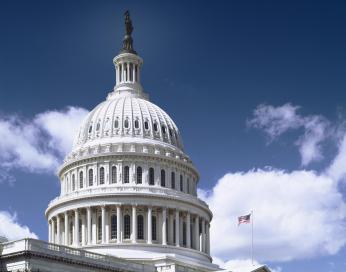
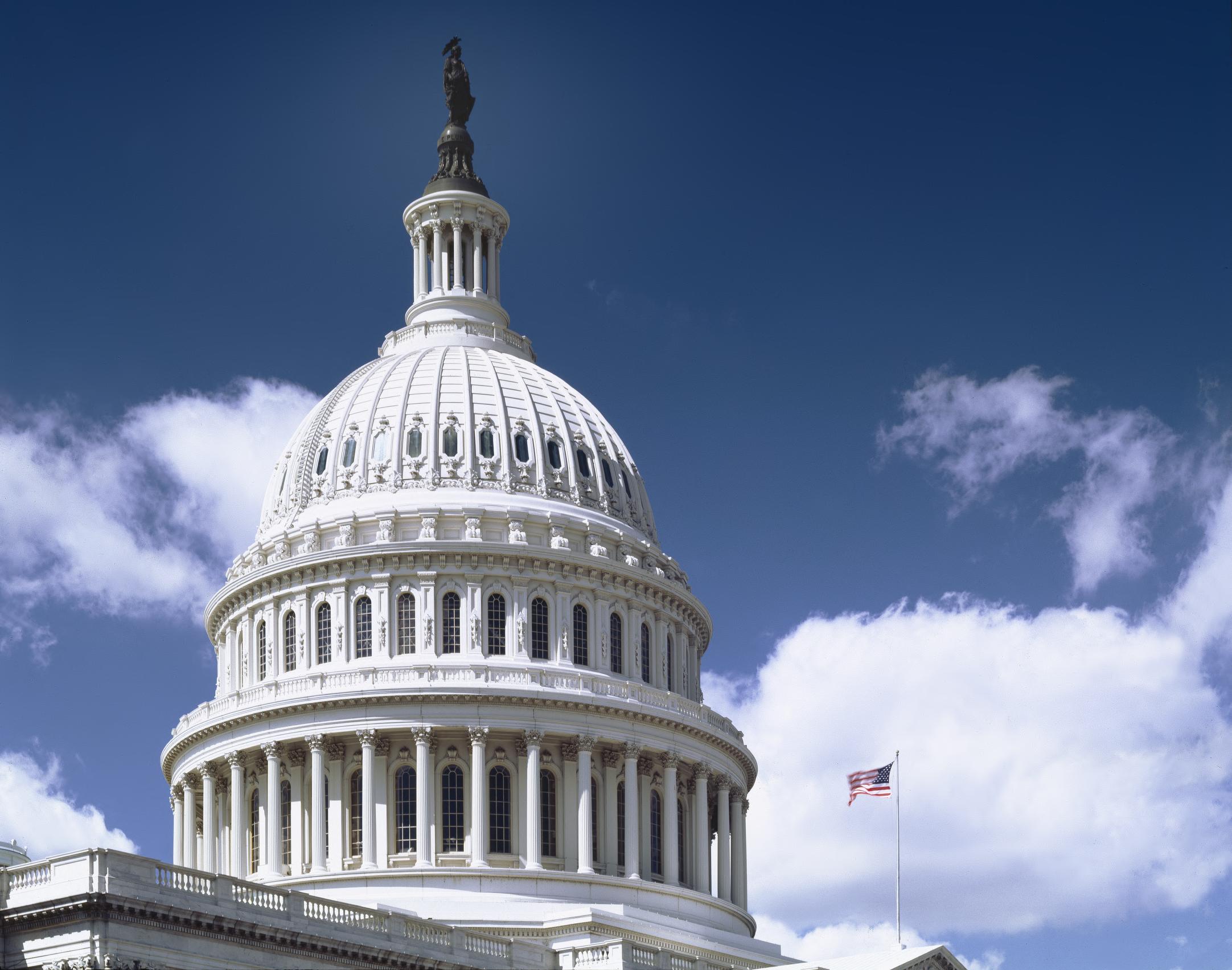
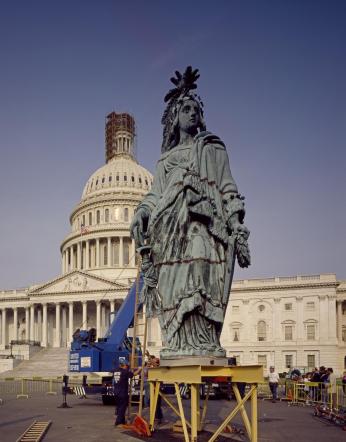
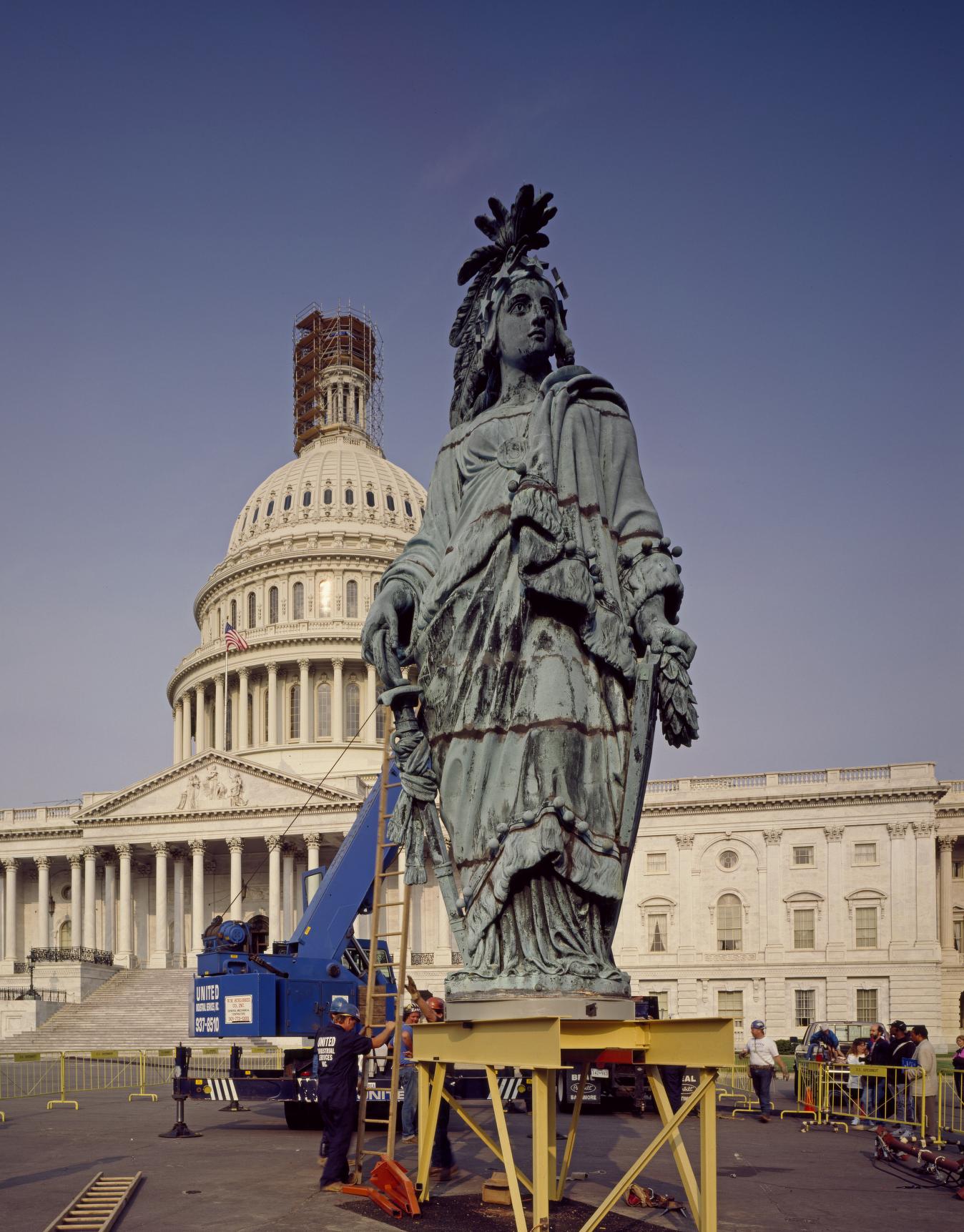

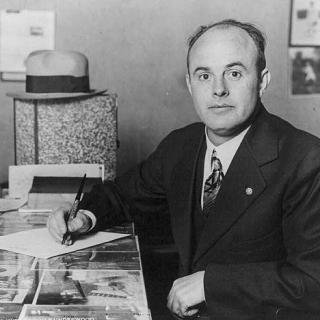
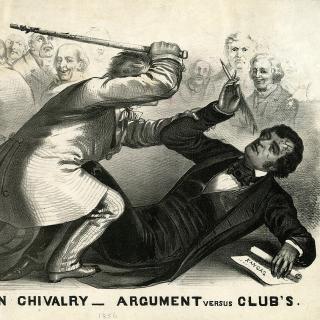
![Sketch of the mythical fuan by Pearson Scott Foresman. [Source: Wikipedia]](/sites/default/files/styles/crop_320x320/public/2023-10/Goatman_Wikipedia_Faun_2_%28PSF%29.png?h=64a074ff&itok=C9Qh-PE1)







